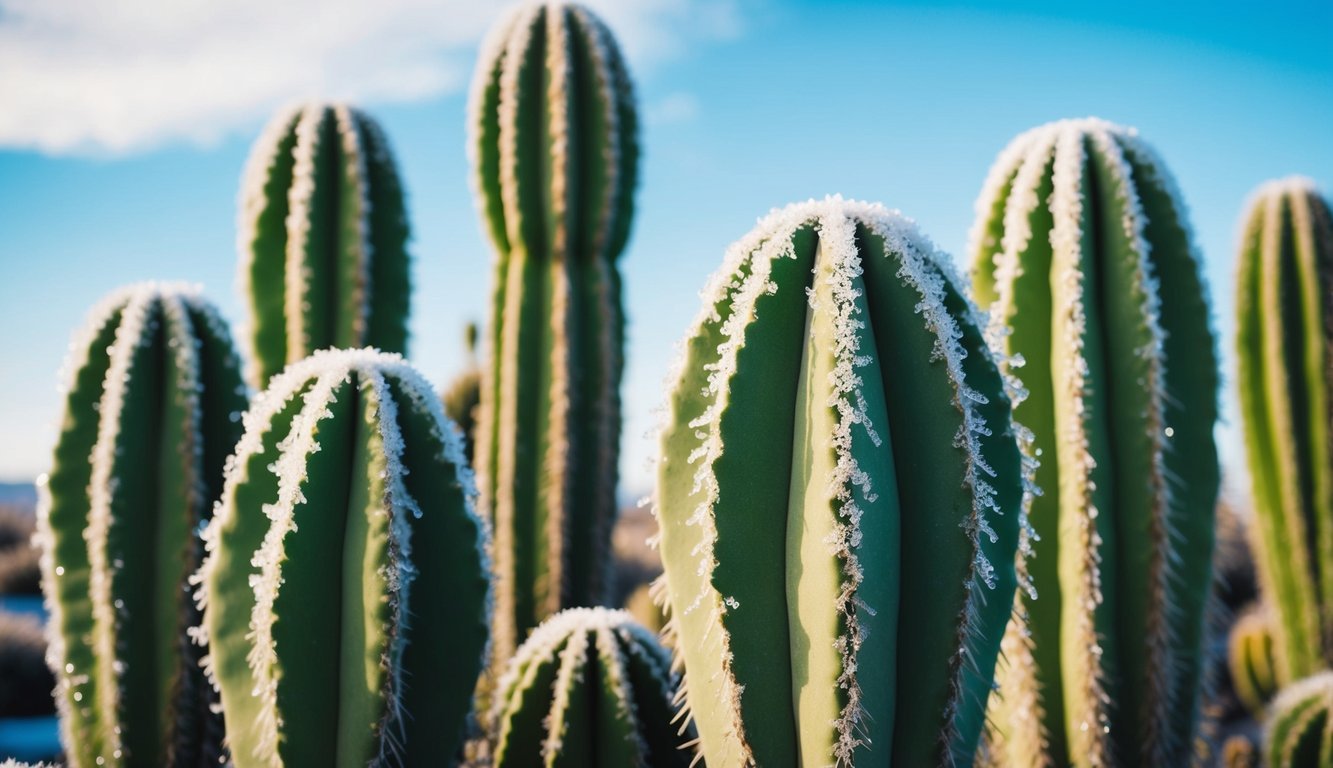
If you live in the Pacific Northwest like I do, you may find that the region’s climate isn’t particularly friendly to outdoor cacti.
That’s why I choose to keep mine as indoor companions for most of the year.
However, during the sunny summer months, I love to move them outside, letting them bask in the warmth of the sun on my patio.
One year, I made a careless mistake—I forgot about my cacti, which I had placed on the side patio.
My realization hit hard when local news reported a sudden cold snap that devastated late-season crops.
It was then that I remembered my poor, exposed plants.
When I finally checked on them, most were surprisingly fine, but a few exhibited worrying white patches.
I immediately brought them inside and began the process of recovery.
If you’ve ever found yourself in a similar situation, you know the panic that sets in when you think about your plants being left out in the cold.
But don’t fret—there’s hope.
Understanding Cacti Resilience
Cacti possess an incredible capacity to heal themselves from damage.
So before you despair, take a moment to assess the situation.
This guide will help you identify cold damage in your cacti and offer actionable steps to bring them back to health after a frost.
Identifying Damage Signs
Start by moving the affected cactus to a warmer location and give it a thorough inspection.
The telltale signs of frost damage are often easy to spot: blackened or browning areas that may feel soft or mushy indicate injury.
At first glance, you might notice light white patches that can quickly escalate to darkened, mushy spots.
Some cacti may droop or appear wilted, and fluid leakage from damaged areas isn’t uncommon.
You may also find soft sections without significant discoloration.
Techniques for Reviving Affected Cacti
Once you understand the extent of the damage, how do you restore your cactus to health? Patience is vital, as it can take weeks for the full scope of harm to reveal itself.
Begin by relocating your plant to a warm, protected space, and resist the temptation to water it right away.
After a cold exposure, allowing the plant to dry is crucial.
Pruning can occur once you’ve assessed the damage fully, especially if you’re keeping the cactus indoors.
When you’re ready to trim, remove any mushy areas, cutting at least an inch beyond the damaged tissue.
Use sterilized pruning shears or a knife for a clean cut.
In some cases, this may even mean removing the entire top of a columnar cactus or several branches from a branching type.
To prevent finding your plants in the cold again, set a reminder on your phone or jot a note in your gardening journal to bring your cacti indoors before the chill sets in.
If you have outdoor cacti, covering them with a frost blanket can provide protection when temperatures dip below 35°F.
Remember that cacti are resilient plants.
Don’t lose hope if they appear injured—if they haven’t completely collapsed or turned entirely black or white, there’s a strong chance they can bounce back with your care.
Sometimes, all they need is a little encouragement from you to flourish once again.
Source: Gardenerspath.com

